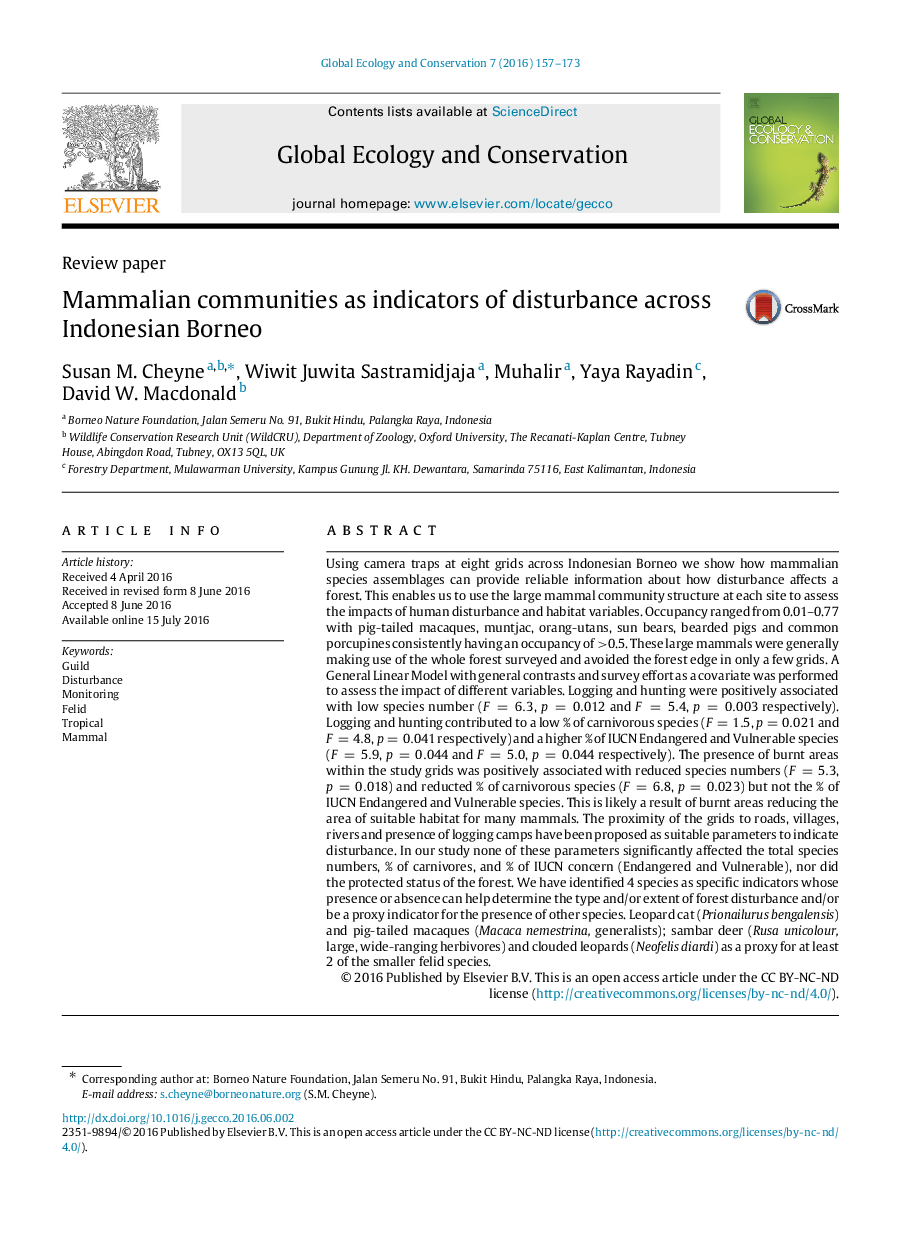| Article ID | Journal | Published Year | Pages | File Type |
|---|---|---|---|---|
| 4379465 | Global Ecology and Conservation | 2016 | 17 Pages |
Using camera traps at eight grids across Indonesian Borneo we show how mammalian species assemblages can provide reliable information about how disturbance affects a forest. This enables us to use the large mammal community structure at each site to assess the impacts of human disturbance and habitat variables. Occupancy ranged from 0.01–0.77 with pig-tailed macaques, muntjac, orang-utans, sun bears, bearded pigs and common porcupines consistently having an occupancy of >>0.5. These large mammals were generally making use of the whole forest surveyed and avoided the forest edge in only a few grids. A General Linear Model with general contrasts and survey effort as a covariate was performed to assess the impact of different variables. Logging and hunting were positively associated with low species number (F=6.3F=6.3, p=0.012p=0.012 and F=5.4F=5.4, p=0.003p=0.003 respectively). Logging and hunting contributed to a low % of carnivorous species (F=1.5F=1.5, p=0.021p=0.021 and F=4.8F=4.8, p=0.041p=0.041 respectively) and a higher % of IUCN Endangered and Vulnerable species (F=5.9F=5.9, p=0.044p=0.044 and F=5.0F=5.0, p=0.044p=0.044 respectively). The presence of burnt areas within the study grids was positively associated with reduced species numbers (F=5.3F=5.3, p=0.018p=0.018) and reducted % of carnivorous species (F=6.8F=6.8, p=0.023p=0.023) but not the % of IUCN Endangered and Vulnerable species. This is likely a result of burnt areas reducing the area of suitable habitat for many mammals. The proximity of the grids to roads, villages, rivers and presence of logging camps have been proposed as suitable parameters to indicate disturbance. In our study none of these parameters significantly affected the total species numbers, % of carnivores, and % of IUCN concern (Endangered and Vulnerable), nor did the protected status of the forest. We have identified 4 species as specific indicators whose presence or absence can help determine the type and/or extent of forest disturbance and/or be a proxy indicator for the presence of other species. Leopard cat (Prionailurus bengalensis) and pig-tailed macaques (Macaca nemestrina, generalists); sambar deer (Rusa unicolour, large, wide-ranging herbivores) and clouded leopards (Neofelis diardi) as a proxy for at least 2 of the smaller felid species.
